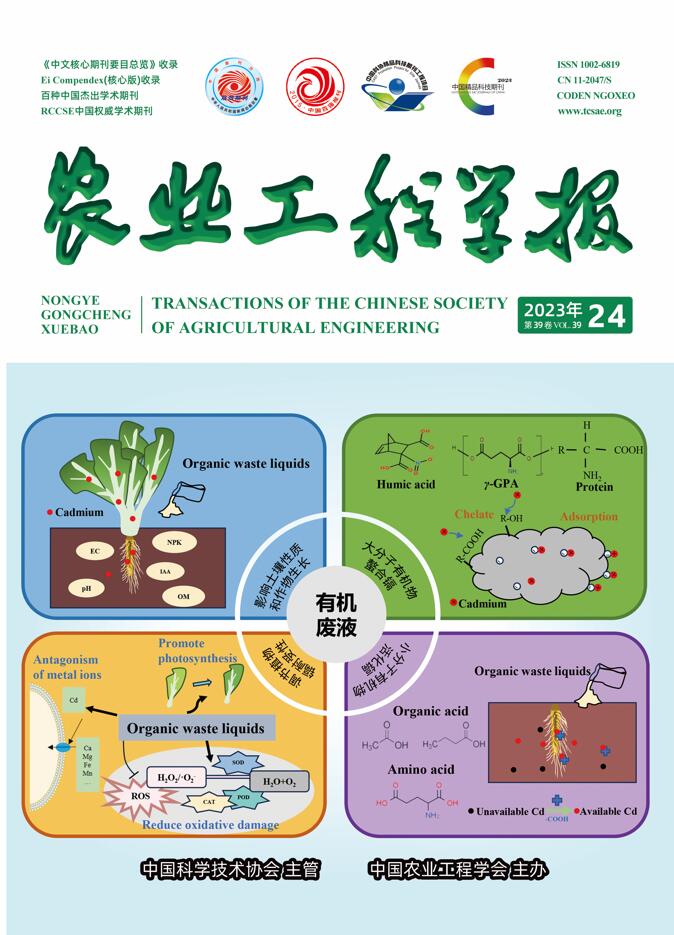Spatial-temporal pattern differentiation and influencing mechanism of land reclamation in China
Q2 Agricultural and Biological Sciences
引用次数: 6
Abstract
A large quantity of land resources have been damaged due to intense human activities and natural disasters, such as mining operation, infrastructure construction, and landslide. The expectation to restore the function of the degraded land is increasingly drawing much attention from both publics and governments. After decades' efforts, there is still a heavy task of land reclamation that needs to be finished in China. Due to the strong regional differentiation, the situation of land reclamation in each province is different from others. In order to reduce the regional differences with a purpose of promoting the land reclamation in China, it is essential to explore the spatial-temporal pattern differentiation and influence mechanism of land reclamation. This paper took 31 provinces, municipalities and autonomous districts in China as research area to reveal the spatial pattern of the quantity of land reclamation and its influence factors. The considered factors included the economic, social, technical, institutional and natural conditions. Data were collected from related statistical yearbook, published paper and China national knowledge internet (CNKI). We employed exploratory spatial data analysis to detect the spatial pattern of land reclamation in China. Besides, factor analysis was used to discover the public driving force of land reclamation. Panel data model was used to quantify the influence of different factors on the quantity of land reclamation in different regions. It could be found that: 1) The quantity of land reclamation in China was featured by a weak spatial autocorrelation and three-grade distribution pattern, and it showed a spatial nonstationary process with inter-annual instability from 1999 to 2013. This pattern was partly in accordance with the economic development and affected by some factors such as the distribution of mineral resource and differentiated land reclamation policies; 2) Due to the weak spatial aggregation, only one area with H-H (high-high) clustered reclamation was detected in eastern China (the center was Jiangsu Province), and not any other significant hot area was been found; 3) The 3 public factors mainly affecting land reclamation were mission, drive and support respectively. It can be inferred that the most significant motive force of land reclamation in China is economic driving force, and the second force is mission of land reclamation. This indicates that, to some degree, the insufficient quantity of land reclamation cannot only attribute to the technical problem. Obviously, it is a synthesis problem related to other factors, especially the economy. For eastern China, land reclamation is mainly driven by the pressure of land resource shortage and economic attraction. Central China is also suffering from the pressure of land resource shortage, but its land reclamation is negatively affected by the ongoing mining activity. In western China, there is more mission of land reclamation, but the natural condition acts as a significant limiting factor. Based on the results above, some policy suggestions, such as improving the mission-driving mechanism, reforming the guidance of policy, enhancing the transfer of technology and coordinating land reclamation project, have been proposed. The results and conclusions above are expected to provide reference for the planning and management of land reclamation.中国土地复垦时空格局分异及影响机制
由于采矿作业、基础设施建设、山体滑坡等强烈的人类活动和自然灾害,大量的土地资源遭到破坏。恢复退化土地功能的期望越来越受到公众和政府的关注。经过几十年的努力,中国还有一项繁重的复垦任务需要完成。由于区域分异性强,各省土地复垦情况也不尽相同。为了缩小区域差异,促进中国土地复垦,有必要探讨土地复垦的时空格局分异及其影响机制。本文以中国31个省、市、自治区为研究区,揭示了土地复垦数量的空间格局及其影响因素。考虑的因素包括经济、社会、技术、体制和自然条件。数据来源于相关统计年鉴、已发表论文和中国知网。采用探索性空间数据分析方法,对中国土地复垦的空间格局进行了研究。此外,利用因子分析法发现土地复垦的公共驱动力。采用面板数据模型量化不同因素对不同区域土地复垦数量的影响。结果表明:1)1999 - 2013年中国土地复垦量具有较弱的空间自相关性和三级分布格局,表现出年际不稳定的空间非平稳过程;这种格局一方面与经济发展相适应,另一方面受矿产资源分布和差别化土地复垦政策等因素的影响;②由于空间聚集性较弱,东部仅发现1个H-H(高-高)群集垦殖区(中心为江苏省),未发现其他显著热点区;3)主要影响土地复垦的3个公共因素分别是使命、驱动和支持。可以推断,中国土地复垦最显著的动力是经济动力,其次是土地复垦的使命动力。这表明,在某种程度上,土地复垦数量不足不能仅仅归因于技术问题。显然,这是一个与其他因素,特别是经济因素有关的综合问题。东部地区的土地复垦主要受到土地资源短缺压力和经济吸引力的驱动。中部地区也面临着土地资源短缺的压力,但其土地复垦受到持续采矿活动的负面影响。西部地区的土地复垦任务较多,但自然条件是制约复垦的重要因素。在此基础上,提出了完善使命驱动机制、改革政策导向、加强技术转移、协调土地复垦工程等政策建议。研究结果和结论有望为土地复垦规划和管理提供参考。
本文章由计算机程序翻译,如有差异,请以英文原文为准。
求助全文
约1分钟内获得全文
求助全文
来源期刊

农业工程学报
Agricultural and Biological Sciences-Agricultural and Biological Sciences (all)
CiteScore
4.10
自引率
0.00%
发文量
19555
期刊介绍:
TCSAE, the "Transactions of the Chinese Society of Agricultural Engineering," serves as a platform to introduce the latest scientific achievements and developing trends primarily in the field of Agricultural Engineering (AE) in China and, to some extent, from abroad. It encompasses eight disciplines, including Comprehensive Research, Key Technology, Soil and Water Engineering, Agricultural Equipment Engineering and Mechanization, Agricultural Aviation Engineering, Agricultural Information and Electrical Technologies, Agricultural Bioenvironmental and Energy Engineering, Land Consolidation and Rehabilitation Engineering, and Agricultural Produce Processing Engineering.
 求助内容:
求助内容: 应助结果提醒方式:
应助结果提醒方式:


